In this blog post, we'll explore the fascinating and often overlooked gray side of nature.
Gray animals, gray flowers and even gray stones... Prepare yourself for a list full of the variety of this humble color that pops up in unexpected ways.
After reading this list, I'm sure your perspective on gray will change permanently. Welcome to nature's gray tones!
Related: Blue Things, Yellow Things, Orange Things
Flowers
Silverpuffs

Silverpuffs are a genus of North American plants whose scientific name is Uropappus. These plants belong to the Cichorieae tribe and the Asteraceae family.
Usually the U. lindleyi species is accepted, but some authors describe Stebbinsoseris as a separate genus. Silverpuffs plants are known for their silvery tassel-shaped flowers.
The Uropappus lindleyi species is commonly found in parts of Canada and several states of the United States.
Grey spider flower

Grevillea buxifolia, commonly known as the gray spider flower, is a species of flowering plant belonging to the family Proteaceae and is endemic to New South Wales, Australia.
This herb is a vertical or spreading shrub with leaves ranging from elliptical to egg-shaped and wooly-brown to pale brown inflorescences.
Grevillea buxifolia usually blooms from spring to autumn, and its fruit usually consists of a hairy, oval follicle.
This plant grows in the woodlands or heathland of New South Wales and adds color and beauty to its natural habitat.
Russian-vine

Russian-vine is a species of Asian flowering plant known in the knotweed family. This plant, also called Russian ivy, is of Asian origin and is naturally found in regions such as China, Russia, Kazakhstan, and has also entered Europe, North and Central America.
It is used as a cover for unsightly hedges and garden structures due to its rapid growth ability, and serves as a source for honeybees as its decorative white flowers provide nectar and pollen.
However, it also has the potential to be an invasive plant. Russian ivy is also featured in Agatha Christie's novel Nemesis.
The greenhouse of the three sisters of the novel in the Old Mansion has collapsed. The brothers planted this vine to cover what they could not bring back.
Lamb's ear
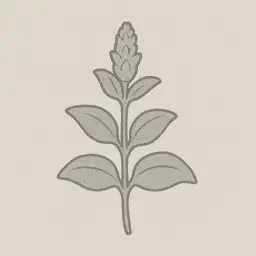
Lamb's ear is a species of flowering plant in the mint family. Its leaves are dark green and covered with a white, soft and furry texture. This plant, which is likened to a lamb's ear, offers a fun experience with its touch.
The flowers are small and pale purple in color. The lamb's ear plant is often grown as an ornamental plant and is used in gardens to cover hedges or structures.
Silvermound

Silvermound, scientifically known as Artemisia schmidtiana, is a flowering plant species originating from Japan, belonging to the Asteraceae family.
It attracts attention with its silvery hairy leaves and small yellow flower heads. It is grown for its leaves, although its flowers are not very distinctive.
The cultivar 'Nana' has won the Royal Horticultural Society's Award of Garden Merit. This plant, which can be grown in sunny or semi-shaded areas, is deer and rabbit resistant while attracting butterflies.
It can be used in borders, borders, alpine and rocky gardens, pots. It is durable and has a medium growth rate. Silvermound gives your garden an attractive silver texture and a pleasant appearance.
German thyme

German sage is a species of flowering plant belonging to the Lamiaceae (mint) family. It is found naturally in areas from southern Europe to the western Mediterranean and southern Italy.
It is 15-30 cm high and 40 cm wide. It is a shrub-shaped, woody plant with small, highly aromatic, gray green leaves and purple or pink inflorescences in early summer.
It can be used as a ground cover in gardens but may have a short lifespan, but is easily propagated by cuttings.
It is the main source of thyme and herbal medicine used in the kitchen. It is slightly more spicy than thyme and sweeter than sage.
Silver Sage

Silver sage (Salvia argentea) is a biennial or short-lived perennial that grows naturally in Southern Europe in a region from Portugal to Bulgaria.
It gets its name from the silvery color of its leaves. The leaves of the plant, which has a wide spread, are covered with thick hairs and have a woolly appearance.
The flowers appear on wax stick-shaped stems 60 to 90 cm long that rise above the leaves in spring or summer. The plant should be cut before the flowers begin to set seeds to ensure longevity.
Silver sage has been awarded the Royal Horticultural Society's Award of Garden Merit.
Silver wormwood

Silver wormwood is one of the native species of the Americas and is known for its silvery leaves. Other names include western stripe grass, white sage, Louisiana wormwood, and gray bushweed.
A rhizomatic perennial, the plant grows 0.3 to 1.0 meters tall. Thanks to the hairs on its leaves, the appearance of the plant has a woolly texture. The small flower heads that bloom in summer are about 0.5 cm wide, surrounded by yellowish florets.
It is widely found in large areas of North America and grows on dry slopes, canyons and dry grasslands. Used by indigenous peoples for medicine, a source of fiber for handmade goods, and for ceremonial purposes, the plant is also grown in gardens.
Indian pipe

This plant, unlike other plants, is white in color and does not contain chlorophyll. Rather than producing food using solar energy, it is parasitic and more specifically a mycoheterotroph.
Their hosts are certain fungi that have a mycorrhizal relationship with trees. In this way, it obtains its food from photosynthetic trees. Since it is not dependent on the sun, it can grow in very dark environments such as in the lower layers of dense forests.
The complex relationships that allow this plant to grow make its production difficult.
Ghost Plant

"Ghost Plant" (Graptopetalum paraguayense) is a species of succulent plant native to Tamaulipas, Mexico. Also known as "mother-of-pearl-plant" and "ghost plant" in English. The reason why this plant is called "Ghost plant" is because the residues on the leaves resemble a ghost.
Gray Birds
Gray hawk

Gray hawks are one of nature's most graceful predators. They are small but fast and agile, often found in forest edges and open fields. Perhaps the most interesting aspect of gray hawks is that their diet is largely filled with lizards and snakes.
Yes, you heard right, these graceful predators are adept at preying on snakes and lizards!
As they glide through the sky, you can recognize them by their gray and white striped tails and orange legs. Also, they often sit on a high branch and gaze at their prey, so be sure to look up on your next hike!
Grey plover

These birds have a black belly and chest, and white and black spotted feathers on their backs and wings in summer. In winter they shed their colorful plumage to a rather stark gray with a grey-speckled chest and a white belly. In the air or on the ground, they are easily distinguishable from other species, because even in flight, their black feathers are visible under their wings.
They make a long-distance migration from their Arctic habitats to overwinter in coastal areas around the world. In fact, the majority of them that go to Australia are female birds.
These volatile travelers make regular non-stop flights over continents and only land in severe weather conditions or to feed in coastal-like areas such as the shores of very large lakes. This impressive lifespan of the Gray Little Forest Wagtail's eye is definitely awe-inspiring for nature lovers.
Canada jay

The Canadian jay, also known as the gray jay, is a bird that is both elegant and unusual. It inhabits the boreal forests of North America and the subalpine regions of the Rocky Mountains. This is a fairly large songbird, with pale gray underparts, darker gray above, and gray-white head.
One of its characteristic features is that it has a darker gray nape area. With many names, this bird is known for its rapid adaptability to human activities and often approaches humans for food.
It is also associated with a mythological figure in various indigenous cultures. The most interesting aspect of these birds is that they hide their food in the areas where they gather in temperate periods in order to survive the winter months.
Gray catbird
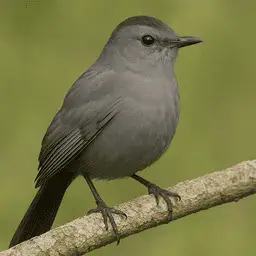
The gray jay is a medium-sized passerine bird native to North America and Central America. Belonging to the family Mimidae, this bird is the only member of the genus Dumetella.
Compared to other species of jays, it has a more subdued coloration and is also known in some areas as the "juniper jade". Gray jays are known for their ability to mimic the songs of other birds. In addition, they can even mimic mechanical sounds.
Their song resembles a cat-like call and often comes from within the bushes. Its natural habitats are forest edges, bushes and abandoned farmland.
In winter, they prefer fruit-filled bushes close to water sources. Gray jays are interesting birds noted for their unusual behavior and mimicry abilities.
Great grey shrike

The great gray shrike is a large predatory species belonging to the songbird family. Its back is pearl gray with a black eye mask and its underparts are white.
It usually breeds above the 50th latitude of northern Europe and Asia, and migrates to temperate regions in winter. Rodents play an important role in its diet.
These interesting birds have two remarkable behaviors: storing their food animals by sticking them into thorns and using the treetops to spy on prey around them. The great gray shrike is an interesting and funny bird with a story.
Grey wagtail
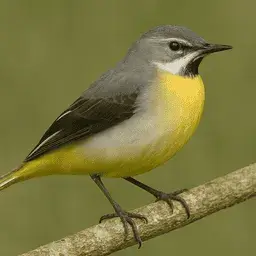
The gray wagtail, Motacilla cinerea, is a species of bird that lives near water and streams. A slender wagtail, the gray wagtail stands out with a white brow line and a broken eye ring.
The upper feathers are gray, the underparts are white, and the lower abdomen is yellow. The throat of males is black during the breeding season.
The gray wagtail has a wide distribution with populations migrating to Europe, Asia and Africa. During the breeding season they are always associated with flowing waters and make their nests near streams or near artificial structures.
Apart from breeding, they can be seen in lakes, coasts and other habitats near water. Like other types of wagtails, they wag their tails frequently and make low flights.
Grey francolin
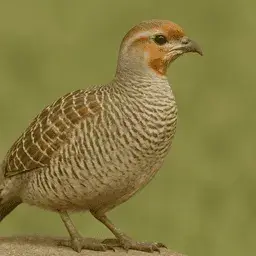
The gray francolin is an interesting bird that lives in the Indian subcontinent and Iran. It lives on the ground in farmlands and bushes. It is known for its loud and repetitive calls.
It should not be confused with other types of francolin. Gray francolin flies quickly and weakly at low flight distances.
It hides its nests in the soil and lays 6-8 eggs. Their food is seeds, grains and insects. Traps and calling birds are used in hunting. It can also be bred as a pet and used for combat.
Grey heron
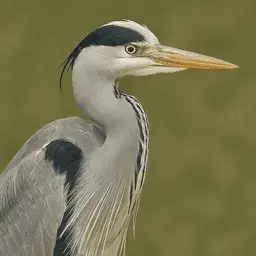
The gray heron is a long-legged waterfowl. It lives in parts of Europe, Asia and Africa. It occurs in wet areas such as lakes, rivers, marshes and sea coasts.
It feeds on aquatic creatures while standing or diving into shallow waters. It has a white head and neck, a black stripe, and a black crest. It nests in trees, usually in colonies, and lays 3-5 blue-green eggs. The gray heron has a strong and long beak.
It usually glides and makes a characteristic "fraaank" sound. This interesting bird has been featured in mythology and food in different cultures.
Grey partridge

The gray partridge is a game bird belonging to the pheasant family. Its body is brown and gray-haired, its belly is white, and many males and females have a large chestnut-brown horseshoe marking.
They usually make their nests on the edge of grain fields and lay up to 20 eggs. Young partridges are yellow-brown in color and do not have characteristic facial and lower feather markings.
Grey falcon
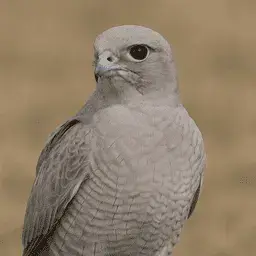
The gray falcon is a medium-sized falcon native to Australia. It is rare and currently classified as "endangered". Their plumage usually has gray upperparts and white underparts.
Adults have a height of 30-45 cm and a wingspan of 85-95 cm. Especially females. The gray falcon mostly inhabits arid interior areas and is found in Triodia grasslands, Acacia scrub and low-wood arid areas.
Although the number of this rare nature is small, it is possible to see it in protected areas.
Other Animals
Turtle
.webp)
Turtles are reptiles belonging to the order Testudines, known for their shells. Modern turtles are generally divided into two main groups: Pleurodira (side-horned turtles) and Cryptodira (hidden horn turtles). Their shell consists of bone and the upper part is the domed carapace, and the lower part is the flat plastron or abdominal plate.
The shell is covered with scales made of keratin.
Turtles breathe air and lay their eggs not underwater, but usually near or around water.
Colubridae
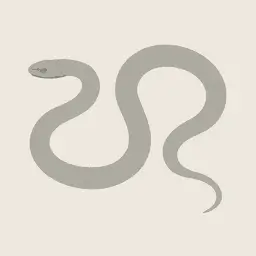
Colubridae is the snake family and the largest snake family with 249 genera. The oldest species are found dating back to the Oligocene period. Colubrid snakes are found on every continent except Antarctica.
Most colubrids are not poisonous or have a poison that is not harmful to humans, so they are mostly harmless. However, some groups, such as the Boiga breed, can cause medically significant injuries.
The boomslang snake, branch snakes, and the Asian genus Rhabdophis have caused human deaths. Some snakes of this family are described as having "posterior teeth," meaning they have longitudinally grooved teeth on the back of their upper jaws.
Monitor lizards
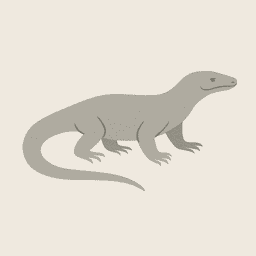
The monitor lizard represents the Varanidae family of lizards in the Varanus genus. Native to Africa, Asia, and Oceania, one species of these lizards is also found invasively in the Americas. About 80 species are recognized.
Monitor lizards have long necks, strong tails and claws. Adult individuals can reach as low as 20 cm (7.9 in) in some species, such as Varanus sparnus, and exceed 3 meters (10 ft) in species such as the Komodo dragon.
Gray treefrog
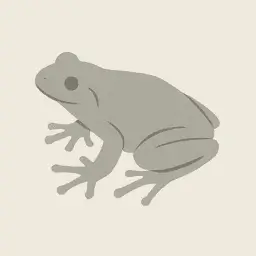
The gray treefrog (Dryophytes versicolor) is a species of small tree-living tree frog native to a large region of the eastern United States and southeastern Canada.
The gray tree frog has variable colors such as gray, green or brown, thanks to its ability to change colors.
Distinctive features include a dark band pattern on their legs and bright yellow or orange lower legs. Usually found in woodland areas, these frogs differ from Cope's gray tree frogs, which have a distinctively shorter and quicker call from other tree frogs.
D. versicolor also has 48 chromosomes (4n) and is also referred to as tetraploid gray tree frog in the scientific literature. This strain is capable of withstanding frozen visceral fluids down to -8 °C (18 °F). The gray tree frog is often seen lying on tree branches or leaves and uses its excellent camouflage abilities to hide from predators.
Gray ratsnake

Gray ratsnake (Pantherophis spiloides) is a non-venomous snake species from the snake family.
It is also known as the central snake, chicken snake, mid-region snake, or black pilot snake. A medium-sized snake, the gray snake can reach lengths of up to 6 feet. The gray snake, which retains its young pattern in the southern region into adulthood, is separated by dark long back spots and light gray body scales, has a light gray crown with dark stripes on its head and a layer covering the eyes.
Gray whale

The gray whale is a baleen whale with whiskers in its mouth. A large migrant, the gray whale migrates annually between feeding and breeding grounds. It can stretch up to 14.9 meters (49 ft) and weigh 41 tons (90,000 lb).
It got its name because of the gray spots and white spots on its dark skin. In the past, they were called "devil fish" because of their aggressive behavior when hunted.
This whale species is the only living species in the genus Eschrichtius. Depending on their food source, the gray whale has two populations, the Pacific Northeast (North America) and the endangered Pacific Northwest (Asia). The North Atlantic population disappeared from the European coast around 500 AD (perhaps due to hunting) and from the American coast in the 17th to 18th centuries.
Eel

The eel is a long, reptilian fish. Eels, which belong to the Anguilliformes order, consist of 19 families, 111 genera and about 800 species.
Eels go through an important developmental process from the early larval stage to the adult stage and are often predators.
The term "eel" is also used for some other snake-shaped fish species, such as the electric eel, spiny eel, swamp eel, and deep-sea spiny eel. However, these other groups have evolved their snake-like shape independently of true eels.
Eels live in both saltwater and freshwater environments, and some species show catabromus traits.
Bottlenose dolphins

Bottlenose dolphins are intelligent and sympathetic aquatic mammals. They usually live in warm and temperate seas and get their name from their shortened teeth.
The intelligence of these sweet creatures has impressed many researchers. Their ability to use tools and the cultural knowledge they pass on from generation to generation change their interactions with people.
Bottlenose dolphins, which can be trained to detect naval mines or mark enemy divers, have even been used in military operations.
Gray slender loris
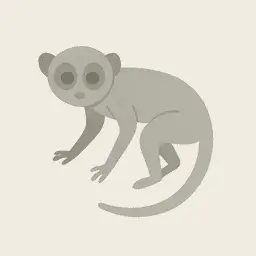
Gray slender loris is a cute primate with a long, slender tail. It is native to India and Sri Lanka and lives in subtropical and tropical arid forests and moist low-altitude forests.
It is threatened by habitat loss. This nocturnal species feeds on insects and rarely consumes fruit, flowers and small animals. Their eyesight and climbing skills are remarkable. It has a unique appearance with its gray plumage and large eyes.
Grey seal

The gray seal is a large seal species found in the North Atlantic Ocean. It is known as "gray seal" in English. Males can usually grow up to 2.3 meters tall and weigh up to 310 kilograms.
Females are smaller, usually up to 1.95 meters tall and can weigh up to 190 kilograms. Gray seals have a characteristic straight nose profile, wide nostrils and fewer spots on their bodies.
These interesting sea creatures usually feed on fish and often flap their fins to communicate underwater. Gray seals are found in large colonies in their natural habitat and are a popular tourist attraction in some areas.
Gray smooth-hound
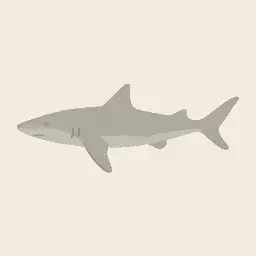
Gray smooth-hound is a species of shark in the Triakidae family.
It is found on the continental shelves of the subtropical eastern Pacific and lives from northern California to the Gulf of California, in areas between 40° N and 23° N latitude, to a depth of 46 m. It can reach up to 1.24 meters in length.
This interesting sea creature lives in calm waters and moves quickly and agilely to catch its prey.
Snail

Snails are a crustacean gastropod. It is a common name for both terrestrial snails and sea snails and freshwater snails. Snails are important to humans as food, pests, and disease carriers.
Their shells are used as ornaments and included in jewelry. Snail is associated with slowness and is sometimes used as an idiom to refer to things that move slowly. The shape of the snail is the same or similar to the cochlea.
Gray short-tailed opossum

The gray short-tailed opossum is a small marsupial native to South America. Without a true pouch, the gray bobtail opossum does not have a pouch, unlike most other marsupial mammals.
Its scientific name, Monodelphis, is of Greek origin meaning "single womb" (due to the absence of a sac) and combines with the Latin word domestica meaning "domesticated".
The gray short-tailed opossum was the first marsupial mammal to have its genome sequenced.
Oyster

Whether consumed raw, cooked, collected for pearls, or used in shells to make decorative objects, oysters are the common name for several different species of shellfish that live in saltwater.
Some species are considered the crown jewel of a delicious feast, while others are grown to produce pearls in jewellery.
The word oyster comes from Old French and appeared in English in the 14th century.
It derives from the Latin word "ostrea", which is the feminine form of the word "ostreum". Interesting fact: The word oyster comes from the Greek word "ostreon" and is related to the word "osteon" meaning "bone".
Eastern grey kangaroo

The eastern gray kangaroo is a marsupial that lives in eastern Australia. Great eastern gray kangaroos usually weigh up to 66 kg and can reach almost 2 meters in length.
Although its scientific name is "Macropus giganteus," it's not really a huge bigfoot. By comparison, the red kangaroo living in the arid interior is larger.
Eastern gray kangaroos are usually found in moist and fertile areas and are known for their characteristic soft gray fur. Not to be confused with western gray kangaroos, eastern gray kangaroos have distinctive facial features and lighter colored fur.
Sea slug

Sea snails are marine invertebrates that come in a variety of colors and shapes. Some may be poisonous or bad-tasting. They usually feed on prey such as sponges, jellyfish and plankton.
Gray hairstreak

Gray hair streaks are one of the most common caterpillars in North America. It usually has gray wings and orange spots.
It prefers plants such as valerian and clover and feeds on flowers, especially during the caterpillar period.
It also interacts with ants thanks to its antennae. These butterflies, which belong to a huge family, adorn nature with their beauty.
Tick

The tick is a type of parasitic mite and is commonly found in hot, humid climates.
It feeds on blood sucking and tw
twcan be a carrier of serious diseases that affect both humans and other animals.
The tick goes through four stages in its life cycle and can pose a threat to us, especially when we go for a walk. But learning more about the tick's life can help us deal with it, which offers a safer experience in nature.
Gryllidae
Gryllidae is a family that includes subfamilies and genera known as true grasshoppers, and they have long flagellated antennae. They belong to the suborder Ensifera and are widely found throughout the world (except Antarctica).
The largest members of this family are the 5 cm long bull locusts, which dig tunnels to depths of up to one metre. Tree locusts are graceful, white or pale green insects, while field locusts are vigorous brown or black insects.
Many taxa in the suborder Ensifera can be broadly referred to as locusts, including cave locusts, sand locusts, spider-locusts, mole locusts, ant locusts, and locusts.
Gray langur
Gray langurs are interesting Old World monkeys native to the Indian subcontinent, also known as Hanuman langur or Hanuman monkeys. These monkeys, which have gray colors, have black faces and ears.
There are differences between the different species, such as the darkness of the hands and feet, the general color and the presence of a crest.
Their size varies depending on the sex, and males are larger than females. In addition, the mobility of langurs is quite remarkable. They can move both in trees and on the ground and can jump long distances.
Gray bat
The gray bat is a bat species native to North America. Their populations have declined due to human intervention and have been put under conservation. Gray bats live in caves and hunt at night. Their size ranges from 7 to 16 grams. This interesting and protected species is an important part of cave ecosystems.
Gray fox
The gray fox is a mammal species common in North America and Central America. It is usually distinguished from other canids by its gray upperparts, black tail and strong neck.
It has an interesting appearance with its gray feathers and asymmetrical pupils. Despite competing with the red fox, it began to live in urban and suburban areas and successfully adapted. Amusingly, despite the "gray" coloration, it has black, white, and gray colors on its body and tail.
Gray mouse lemur
The gray mouse lemur is a small species of lemur that lives on the island of Madagascar. It attracts attention with its mouse-like size and coloration.
Being an active nocturnal animal, this species of lemur lives on trees in the forest and feeds on fruit, insects, flowers and nectar. Their natural predators include owls, snakes and other predators.
It is widely found in Madagascar, though endangered. Amusingly, the gray mouse lemur is actually a species of lemur and is so named because of its mouse resemblance.
Rocks
Slate
Slate is a fine-grained, layered metamorphic rock. A shale layer type sedimentary rock whose origin contains clay or volcanic ash was transformed by low-grade, regional metamorphism.
It is the finest grained folie metamorphic rock. Slate is a stone mined in flat slabs that has long been used for roofing, flooring, and other purposes. Although it is usually gray in color, it can be found in different colors.
Slate is also known for its uses as whiteboards and roof tiles. It is also a material from which various items are made.
Basalt
Basalt is a type of fine-grained volcanic rock formed by the rapid cooling of magnesium and iron-containing (mafic) lava. More than 90% of the volcanic rocks on Earth are basalt.
Basalt is black or dark gray in color and is characterized by low viscosity lava spreading rapidly and covering large areas. Basalt is also commonly found on other planets in the Solar System.
For example, most of the plains of Venus, the seas of the Moon, and the surface of Mars are made up of basaltic rocks. Basalt is a particularly durable rock type due to its rapid cooling and mineral composition.
Platinum
Platinum is a chemical element with symbol Pt and atomic number 78. It is a silver-white, dense and transition metal.
The rare platinum is mined mainly in South Africa and is a precious metal due to its high value.
Platinum is resistant to corrosion and is used in many industries, for example in catalytic converters, laboratory equipment and jewelery making. There are also platinum-based drugs used in chemotherapy against some types of cancer.
Limestone
Limestone is a type of sedimentary rock containing calcium carbonate. It is formed by the accumulation of the shells of marine organisms and corals.
Limestone, which is mostly white or gray in color, is found in large regions around the world and has many uses.
As it is used in lime production, it is also used for road base material, paint pigment, soil conditioner and decorative purposes.
It also provides information about past environments and the evolution of life, thanks to the fossils it contains. Karst landscapes are also usually formed by the dissolution of limestone.
Graphite
Graphite is the crystalline form of carbon and has many uses. It can conduct heat and electricity well, has lubricating properties and is used in building materials. It can also turn into a diamond and has interesting properties.
Lead
Lead is a metal with high density, soft and machinable. It has a glossy gray appearance, but turns to a matte gray color when exposed to air. It is a toxic substance and can cause neurological disorders. It is used in construction, plumbing, projectiles and batteries. It should be used carefully and ensure that it does not harm the environment.
Silver
Silver is a shiny white metal and attracts attention with its properties such as electrical conductivity, heat conduction and reflectivity. It is usually found in nature as a free element.
Silver, a precious metal, is used as a money and investment tool. It is also used in various fields such as solar panels, water filtration, jewelry, electrical communications and catalysts.
The medicinal and antimicrobial properties of silver are also known.
Tin
Tin is a soft and shiny metal. It is easy to cut and bend. It makes a sound known as a "spirit cry". It is one of the elements with the lowest melting point.
It has interesting properties with its crystal structure and different allotropes. It has many isotopes and is very common in nature.
It has been used in many fields throughout history, especially preferred in metal alloys and protective coatings. It is also used as a catalyst to speed up chemical reactions.
Others
Volcanic ash
Volcanic ash is small rock particles, mineral crystals, and volcanic glass formed during volcanic eruptions. It can spread over long distances by being carried by the wind. Volcanic ash has various effects on human health, aviation, agriculture and structures.
Cliff
A cliff is a naturally occurring rocky area that usually rises at a steep or nearly steep angle. Cliffs are formed by erosion and erosion processes and are often found along coasts, mountainous areas, hills and along rivers.
Cliffs often consist of weather-resistant and erosion-resistant rocks. Sedimentary rocks such as sandstone, limestone, limestone and dolomite are the most common rocks that often form cliffs.
Also, volcanic rocks such as granite and basalt often form cliffs. The cliffs are known for their natural beauty, and some of them are the highest and most impressive cliffs in the world.
Hail
Hail is a solid form of precipitation. It consists of frozen water droplets and each is called a hailstone. While frozen raindrops fall in cold weather, hail formation is largely inhibited at low surface temperatures.
Hail usually occurs during thunderstorms and is located within about 3.7 km of the main storm.
Hail formation is dependent on strong upward air movement within the storm and low frost levels.
Hail is a form of precipitation that can cause serious damage to man-made structures and damage to agricultural products.
Fog
Fog is a visible aerosol consisting of water droplets or ice crystals suspended in the air. Smoke is a combination of temperature and humidity conditions and often reduces visibility. It can occur by the sea, in the mountains, or in cold weather. It can rain in the form of light rain or snow.
Gray-banded kingsnake
The gray striped king snake is a non-venomous and stylish snake! It is found in the southwestern United States and Mexico. It attracts attention with its gray color and distinctive stripes.
These snakes can grow up to 4 feet long and have a calm nature. They usually feed on lizards, sometimes also eating small rodents or eggs nested by snakes and other reptiles.
Gray-banded king snakes are popular pets due to their striking patterns and manageable size. Just remember that you need to keep away from other king snake species during breeding season, things can get a little wild!
Mangrove snapper
Mangrove snapper is a species of fish that spreads from the Atlantic Ocean to the Caribbean.
It can change color and is usually gray-red. It is famous for its delicious meat and is frequently targeted by anglers. It lives in fresh and salt waters and prefers structures. It is grown on offshore farms in Asia and Oceania.
Grey triggerfish
The gray triggerfish is a species of the triggerfish family. It inhabits the shallows of the western Atlantic Ocean, from the Caribbean to Argentina, and off the eastern Atlantic, Mediterranean, and Angola off the west coast of Africa.
It is usually gray in color and is known for its rough skin. This fish, which weighs approximately 2.3 kg, is caught both in sport fishing and is a delicious bait.
It is a typical member of the Balistes genus with its characteristic features and lifestyle.
Grey reef shark
The gray coral shark is a shark that is a species of the Carcharhinidae family. It is one of the most common coral shark species of the Indo-Pacific region.
The white-tipped first dorsal fin from many similar species can be distinguished by the dark tips on the other fins, the broad black edge of the caudal fin, and the absence of the dorsal line between the dorsal fins.
Usually less than 1.88 meters long, this shark is a fast and agile hunter. Due to its limited reproduction rate and limited distribution, it is susceptible to local population decline and is classified as endangered.
Black iguana
The black iguana is a species of lizard native to Mexico and Central America. They stand out with their large, black tails and striking colours.
They move quickly and agile, and are also excellent climbers. In addition to plant foods, they also feed on small animals. Black spiny-tailed iguanas are commonly found in their natural habitat and are not currently threatened.
Comet
Comets are icy and small Solar System bodies. As they approach the Sun, they emit gases and form a tail. Their cores are made up of ice, dust and rocky particles.
Comets usually have highly eccentric orbits and rotate in various periods. Short-period comets come from the Kuiper belt, while long-period comets come from the Oort cloud.
The surfaces of comets have low reflectivity and are covered with organic compounds on the outside. Comets have been observed by many cultures and religions throughout history.
Mercury
Mercury is the first and smallest planet in the Solar System. It has a heavily cratered surface and has a very weak atmosphere.
Surface temperatures vary widely and can reach up to 427 °C in equatorial regions.
Mercury's internal structure consists of a solid crust, mantle, outer core and inner core.
Because it is so close to the Sun, the intensity of sunlight is 4.59 to 10.61 times greater.
Mercury rotates slowly and rotates three times around its axis while making two revolutions around the Sun. Potential water glaciers on the planet's surface are located in areas away from sunlight. Mercury's origin and development are still being researched.
Ash
Ash is the solid residue left after combustion. There are different types, such as wood ash, and the compounds they contain can enrich the soil or be toxic in some cases.
Ash has disinfecting properties like soap and can be used for cleaning. It is naturally formed as a result of plant burns and can be dispersed in the soil and act as fertilization.
Moon
The Moon is Earth's natural satellite. The Moon, the largest and most massive satellite in the Solar System, orbits at a distance of 384,400 km from Earth. Its surface is a differential rocky body and has no atmosphere, hydrosphere or magnetic field.
The Moon's gravity affects Earth's tides and slowly lengthens Earth's day. The Moon's orbit takes place over a period of 27.3 days, during which the Moon's apparent surface changes depending on the rate at which it is illuminated by the Sun.
The Moon always shows the same side as it is tidally connected to the Earth, but we can see 59% of it from Earth due to perspective changes. The origin of the Moon is due to a massive collision between Earth and Theia.
The moon is the only celestial body visited by humans and has played an important role in cultural references.
Asteroid
Asteroids are minor planets that are not planets or comets and orbit in the inner Solar System. These bodies of rock, metal, or ice, which have no atmosphere, vary greatly in size and shape.
Most asteroids are found between Mars and Jupiter, known as the main asteroid belt. Asteroids are generally classified as type C, type M, and type S. The largest asteroid, Ceres, is a dwarf planet with a diameter of almost 1000 km.
The total mass of asteroids is only 3% of the Earth's Moon. Our knowledge of asteroids is increasing with missions and exploration, and near-Earth asteroids could pose a potential threat.
Fossil
A fossil is the preserved remains or traces of something that lived in the past. Examples are bones, shells, traces of stones and objects preserved in amber.
The study of fossils is the subject of paleontology. Fossils help us understand the evolutionary significance of past life.
Fossils are formed by various processes, ranging in size from microorganisms to dinosaurs. Fossils help us understand the anatomy, behavior and environment of past creatures.
Bacteria
Bacteria are microscopic and mostly free-living organisms. They are found almost everywhere in the world and play an important role in the nutrient cycle.
Some are harmless or beneficial, but some can cause infections. Bacteria are used in many areas such as refining, oil spills, cheese and yogurt production.
Humans and other animals carry and harbor large amounts of bacteria. Most bacteria have not yet been discovered.
Smoke
Smoke is a mixture of airborne particles and gases as a result of combustion or pyrolysis.
It occurs during fires and can be used for pesticide control, communications, and military purposes. It is also used in uses such as incense and cigarettes.
The composition of the smoke depends on the combustion fuel and the conditions. May cause inhalation poisoning and death.

Related: Grey Emojis, Grey Pokemon